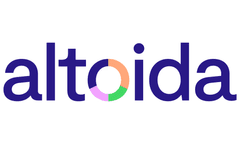Hypoglycemia Articles & Analysis
10 articles found
Disturbances in metabolic pathways can lead to many common human diseases such as cancer, diabetes, obesity, hypoglycemia, hypolipidemia, phenylketonuria, neurodegeneration, etc. Glycolysis Glycolysis is the 10-step process by which glucose is broken down into pyruvate and ATP within the cell, using a series of enzymes to convert each six-carbon glucose molecule into two ...
There were no significant differences between the two groups in the incidence of acute kidney injury, fractures, severe hypoglycemia, diabetic ketoacidosis, and lower extremity amputation. How To Understand These Findings? ...
Med., 2018, one may not need to test themselves several times a day if it is stable type 2 diabetes and on agents (drugs) that do not cause hypoglycemia. According to this article, about 23% filled 3 or more claims for test strips during the year, 14.0% of the study population were using the supplies inappropriately; about 8.8% of subjects were taking agents, which are not ...
Classification and Functions of Common Phytochemicals Flavonoids Species: Quercetin, brassin, catechin, lignan, anthocyanin, resveratrol Functions: Anti-inflammatory, antibacterial, antioxidant, cancer prevention (breast cancer, ovarian cancer), lowering blood lipids and cholesterol Carotenoids Species: Carotene, lutein, zeaxanthin, cryptoxanthin, capsaicin, lycopene Functions: ...
It is no secret that glucose, a form of sugar, is the main source of energy for every cell in our bodies, including our brain cells. Because the brain is packed with neurons, it uses more energy than any other organ in the body. Our brains reward us for consuming sugar. Whether you are eating a delicious meal, sharing a kiss with someone you love, or enjoying a sugary treat, the mesolimbic ...
When the glucose threshold is reached, the hypoglycemic effect is exerted, and the hypoglycemic effect is not stimulated by insulin secretion, so it will not cause the risk of hypoglycemia, so as to achieve the good effect of fast and safe hypoglycemia. 2. ...
Early morning exercise provides energy mostly via the glucose metabolic pathway; liver glycogen reserves are more abundant, less prone to big variations in blood sugar, and may be better acceptable for people with glucose metabolism disorders, such as diabetes and hypoglycemia patients. Evening exercise mobilizes more lipolysis, which may be more appropriate for people who are ...
While there is the potential for dangerous side effects from insulin, including hypoglycemia, ketoacidosis, and high cholesterol, careful blood sugar monitoring can greatly reduce the risk and ease your mind that insulin can be safely taken. ...
But what if you have low blood glucose levels or hypoglycemia? Whether you have diabetes or not low blood sugar levels can be detrimental, if not dangerous to your health. ...
The main types of glucose clamp are as follows: Hyperinsulinemic (Euglycemic) Clamp The classic glucose clamp A continuous infusion of insulin is administered to raise and maintain plasma insulin concentration to 100 µU/ml Peripheral glucose uptake is stimulated and hepatic glucose production is surpressed The glucose infusion rate is then equal to glucose uptake, achieving a steady ...







